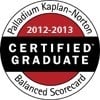Achieving Excellence in Financial Management
You ever wonder how the U.S. government actually gets financial statements from private companies? If you’re a CFO, you may already have heard of an application called SAP Disclosure Management, which, as a Financial Consolidation consultant, I believe is a giant leap forward for companies that currently struggle to comply with SEC reporting requirements.
What A CFO Faces When It Comes To Financial Excellence
However, many, if not most companies, are not publicly traded and do not have to disclose consolidated financials to the government. This doesn’t mean you don’t have to produce and report on consolidated financials.
Why is that? Well, as a CFO, you’re facing:
- Volatility in markets, commodity prices, and stocks
- Increasing globalization
- Increased focus on risk
- Pressure on margins
- Intrusive regulation that is here to stay
- New – potentially disruptive –technologies
What Stakeholders Want To Know About The Company Financials
When taken together, these issues mean that today’s CEOs and other stakeholders want to have a clear picture of not only where the business has been, the traditional rearview mirror method of planning and forecasting, but as well, where the future is taking the company. Most of all, you want to avoid future financial losses.

Don't throw money down the drain!
- Strong cash flow and liquidity
- Compliant and accurate financial reporting
- Maximized profitability
- Reduced cost of finance
- Partnering with the organization to drive value
- Dealing with both IFRS and GAAP based financial systems, in this ever more connected world.
These financial management excellence goals and behaviors have some hard dollar effects on Operating Costs and Effectiveness:

| 24-45% | Faster Time to close books |
| 50-80% | Reduction in Reconciliation costs |
| 20-40% | Lower Ledger maintenance costs |
| 10-20% | Reduction in Internal and external audit cost |
World Class Financial Excellence Defined
World-class companies spend 45% less on their closing and reporting efforts than other companies and save $5.5 million for every $1B in revenue.
Source: The Hackett Group.
SAP Strategic Enterprise Management and SAP BPC
With SAP SEM BCS (Business Consolidation) and now SAP BPC (Business Planning and Consolidation), along with the complete suite of SAP financial management applications, you have the ability to produce consolidated financial statements (and store them) and to resolve those oh so difficult discussions about how to value intra-company transactions.
This is an esoteric area, but in my experience around the globe and managing aircraft depot overhaul operations, I have found that one of the most contentious areas of management is getting two business unit managers to agree on an intra-company transfer pricing cost (especially when foreign currency and inflation is rapidly fluctuating). How does this relate back to SAP Disclosure Management?
SAP Disclosure Management Architecture
With SAP Disclosure Management, you now have the ability to create, entirely in-house, without going to a 3rd party, required SEC disclosure documents. It means you will be:
- Responsible for the preparation and submission of financial statements to regulators and investors
- Executing the complete automation of the “last mile”
- Publishing highly formatted reports (e.g., annual report), board packs with full audit trails from source to disclosure
- Combining amounts stored in consolidation applications with commentary and disclosures stored in Microsoft Word, then transforming them into printed (PDF) and interactive (XBRL) formats
- Deciding whether to continue to outsource this critical aspect of the reporting process to a third-party financial statement publisher?
SAP BPC Integrates With SAP Disclosure Management
SAP BPC Workflows and Functions Make It Easier
SAP Financial Management System
Now you know-it takes a lot to actually comply with SEC reporting requirements. Besides SAP Disclosure Management, there needs to be a comprehensive Financial Management system in place to help CFOs achieve their targets and go beyond budgeting. There also needs to be an underlying design behind the way finance works, including which systems do what. If there is not, you will soon find you have many systems from many vendors doing the same thing and still don't have a financial management system you can call excellent.
People Who Read This Also Read:
- 8 Secrets to SAP Enabled Spend Performance Management
- Learn What Tools To Use To Investigate IS-Mill Functionality
- Leverage SAP BW to Increase Supply Chain Inventory Accuracy



